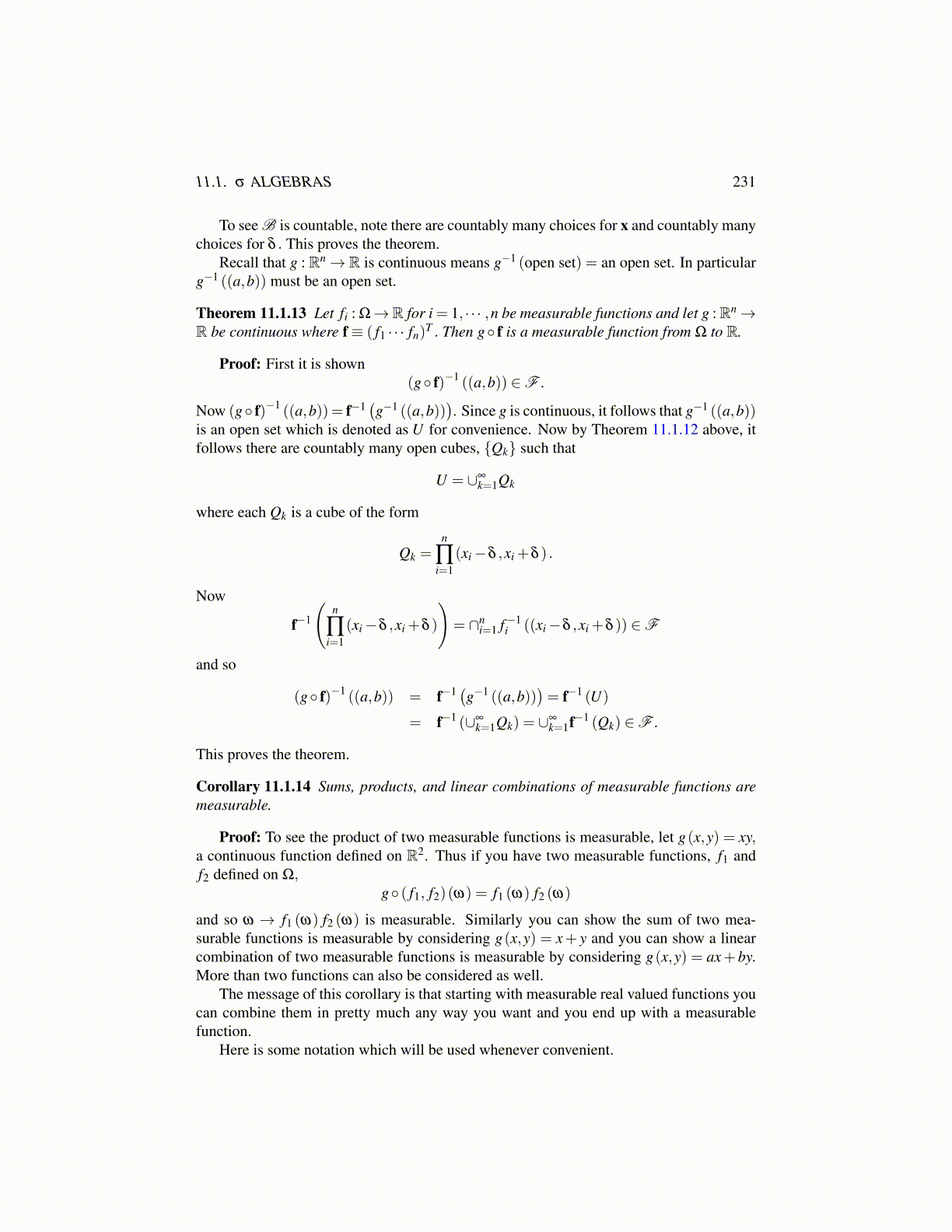
11.1. σ ALGEBRAS 231
To see B is countable, note there are countably many choices for x and countably manychoices for δ . This proves the theorem.
Recall that g : Rn→ R is continuous means g−1 (open set) = an open set. In particularg−1 ((a,b)) must be an open set.
Theorem 11.1.13 Let fi : Ω→R for i = 1, · · · ,n be measurable functions and let g :Rn→R be continuous where f≡ ( f1 · · · fn)
T . Then g◦ f is a measurable function from Ω to R.
Proof: First it is shown(g◦ f)−1 ((a,b)) ∈F .
Now (g◦ f)−1 ((a,b))= f−1(g−1 ((a,b))
). Since g is continuous, it follows that g−1 ((a,b))
is an open set which is denoted as U for convenience. Now by Theorem 11.1.12 above, itfollows there are countably many open cubes, {Qk} such that
U = ∪∞k=1Qk
where each Qk is a cube of the form
Qk =n
∏i=1
(xi−δ ,xi +δ ) .
Now
f−1
(n
∏i=1
(xi−δ ,xi +δ )
)= ∩n
i=1 f−1i ((xi−δ ,xi +δ )) ∈F
and so
(g◦ f)−1 ((a,b)) = f−1 (g−1 ((a,b)))= f−1 (U)
= f−1 (∪∞k=1Qk) = ∪∞
k=1f−1 (Qk) ∈F .
This proves the theorem.
Corollary 11.1.14 Sums, products, and linear combinations of measurable functions aremeasurable.
Proof: To see the product of two measurable functions is measurable, let g(x,y) = xy,a continuous function defined on R2. Thus if you have two measurable functions, f1 andf2 defined on Ω,
g◦ ( f1, f2)(ω) = f1 (ω) f2 (ω)
and so ω → f1 (ω) f2 (ω) is measurable. Similarly you can show the sum of two mea-surable functions is measurable by considering g(x,y) = x+ y and you can show a linearcombination of two measurable functions is measurable by considering g(x,y) = ax+by.More than two functions can also be considered as well.
The message of this corollary is that starting with measurable real valued functions youcan combine them in pretty much any way you want and you end up with a measurablefunction.
Here is some notation which will be used whenever convenient.